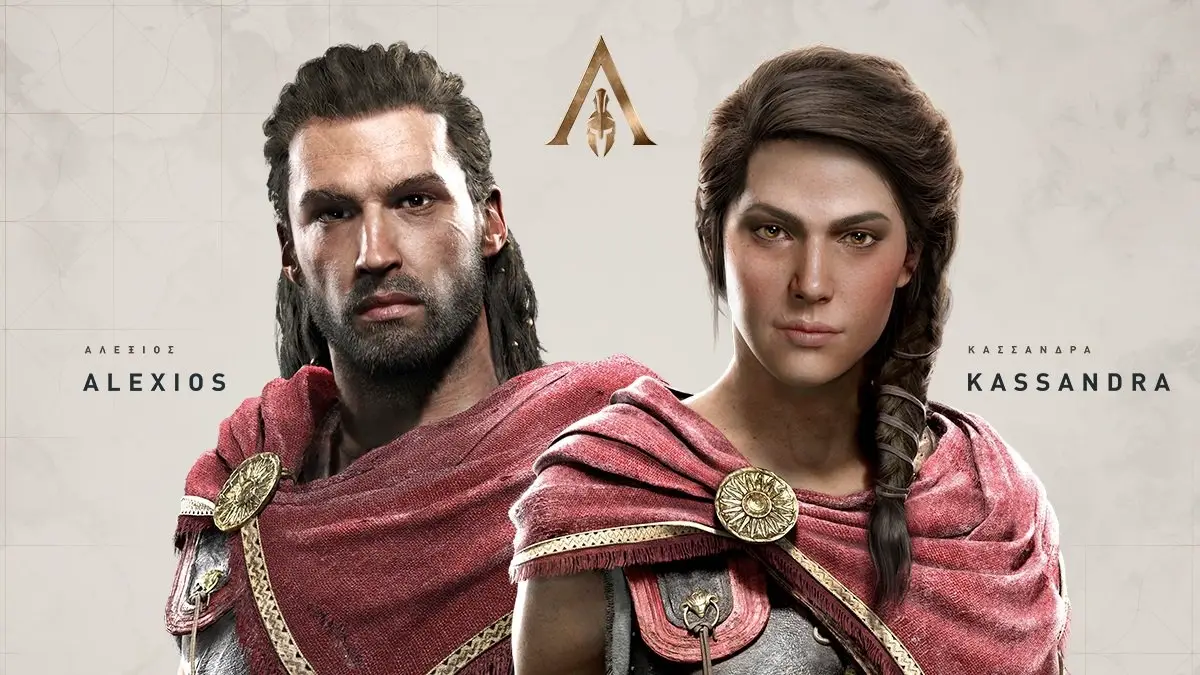The more I think about how the upcoming “Assassin’s Creed Odyssey” allows you to play as either a male or female protagonist, the more I’m frustrated by the very idea. I’m not against having options and I’m not outright against change — I’m frustrated because the game will undoubtedly cement Alexios/Kassandra as two extremely forgettable characters, simply because Ubisoft wouldn’t commit to a specific writing philosophy.
To provide some context as to why myself and other fans are upset with this decision, a look at the series’ character line-up will suffice. A small note: I will only consider the main installments of the franchise and not DLC or other media.
A Diverse Team?
The ongoing war between the Assassins and Templars makes up the basic premise of the “Creed” franchise. In theory, anyone could belong to either one of these factions. The more high-profile members of each group tend to belong to the more aristocratic tiers of society, especially when it comes to Templars.
In general, though, if a person shares the general beliefs of the Creed or the Order and offers some kind of value, they could be approached by either group. This explains why a Templar could be the Pope or just a soldier during the American Revolution. It explains how a spoiled, young Florentine nobleman or a literal pirate could become an Assassin.
So, it might be surprising that it wasn’t until the fifth installment that fans got a non-white lead, with Native American Ratonhnhaké:ton (aka Connor). That seems pretty odd for a video game series that pointedly informs the player of its multicultural team at the start of every game.
It’s not as bad as it looks, however. For starters, the first protagonist, Altaïr, was technically Arabic, but his hood hid most of his face. The fourth game properly depicts him, but he wasn’t the lead character.
It is also important to note that all five of these games are tied together by modern-day protagonist Desmond Miles, who relives the memories of his ancestors — the playable Assassins. Given that Desmond is a white male, it’s not shocking most of his ancestry would consist of equally white people, and three of the first five games follow the Italian Assassin Ezio.
The narrative of that trilogy builds Ezio as a character and advances the storyline in modern day, clearly showing the plot to be more than an excuse to play as a white male. The writing team at the time had a rather clear story to tell.
“Assassin’s Creed 4: Black Flag” would be the sixth installment in the franchise and would star another white male, Connor’s grandfather, Welsh pirate Edward Kenway. The next two games would release at the same time and both would have white male leads, but only one would raise the key question: Where are the women?
The Boys & Girls Clubs
“Assassin’s Creed Rogue,” released at the end of the Xbox 360/PS3 generation, essentially had the same exact gameplay as “Black Flag,” with the main appeal being the story focusing on an Assassin-turned-Templar. It was expected to be received with little fanfare, and the higher profile Xbox One/PS4 installment “Unity” ended up facing backlash for its lack of a playable female character.
With “Unity,” the series saw its first ever co-op missions, which a total of four players could complete. All players would play as protagonist Arno, but their teammates would appear as random Assassins, all of which were male. This implied that Ubisoft couldn’t even be bothered to include a playable, nameless female Assassin in their franchise, even though earlier games made it clear that women are indeed part of the Brotherhood.
The reason Ubisoft provided for the lack of female inclusion was money constraints. They said animating the women differently and recording an entire new set of voice lines would be too costly. Given how buggy the game was at launch, money might have indeed been the issue, but it looks bad when a bit of inclusion is too expensive in a game that boasts its inclusiveness.
“Syndicate” would release the following year, this time with two playable protagonists, Evie and Jacob Frye. Being able to play Evie should have made “Syndicate” the game to put Ubisoft back in fans’ good graces, but take one look at the cover art and you can already see the issue.
Evie doesn’t share the focus with her twin brother Jacob on the cover, and she has noticeably fewer missions than Jacob in the game. The game itself received a lukewarm response, meaning Evie doesn’t even get to be tied to a memorable entry.
“Origins” would come two years after “Syndicate” and serve as a new beginning for the series. The gameplay would be radically different from past titles and it sold incredibly well. Still no female lead, but protagonist Bayek was another person of color, so maybe a title with a female lead remained in the cards. Unfortunately, that was the case.
Identity Crisis
Right now, “Assassin’s Creed Odyssey” is getting a lot of side eye from fans. This trepidation partially comes from the gameplay looking like an expansion of “Origins” and partially from the main character being one ability away from a flat-out superhero. The decision to allow the player to play as either a man or woman is receiving the most attention, though, and some fans are upset by this for a few reasons.
Along with being able to choose to play as either Kassandra or Alexios, the player can choose certain dialogue, take on certain missions and even romance certain characters. All of this guarantees a weak story — see, Kassandra and Alexios are essentially the same person. This renders the player’s choice little more than cosmetic preference.
That’s why the protagonist of “Odyssey” will be remembered as “Misthios,” and not by their actual name. Yes, Alexios/Kassandra may play key roles in certain battles during their time, but their love lives and smaller quests won’t matter because technically they might never have existed.
This split also robs fans of a potentially interesting female protagonist and a clichéd, but solid male protagonist. If Kassandra was the main character, the story would have to address her being a woman rising to fame as a mercenary in Ancient Greece, a time when seeing a woman in battle was a rare sight (not so rare for the Spartans, but still not the norm). It would provide a new angle the series has yet to explore and really cement the series as a gaming experience for all.
Admittedly, telling that story is no easy task, and it’s not like these games sell well because of their narrative offerings. It would’ve been understandable if Ubisoft gave Alexios the series’ staple revenge story and just focused on making a likeable, memorable lead, since that’s clearly their comfort zone.
Instead, players will have to accept that most of the game’s supporting cast will oddly ignore the fact Kassandra is female because Alexios will be holding her back, just as fans must accept that Kassandra appears in almost no promotion for game and doesn’t even make the game’s front cover. The more informed fans will see that Kassandra is the canon character in “Odyssey” according to the book that will be released alongside the game, but the game itself will completely ignore that in the name of “choice.”
Ubisoft is trying to make everyone happy in terms of gameplay and story. Maybe the gameplay will satisfy everyone (highly unlikely, since some people are already turned off by the released gameplay footage), but fans of the story are getting the short end of the stick with “Odyssey,” in more ways than one.

















